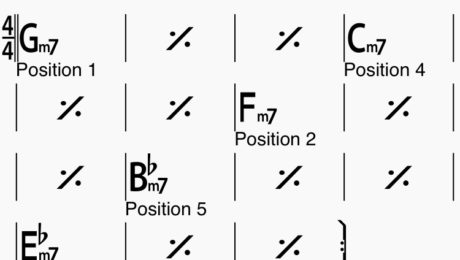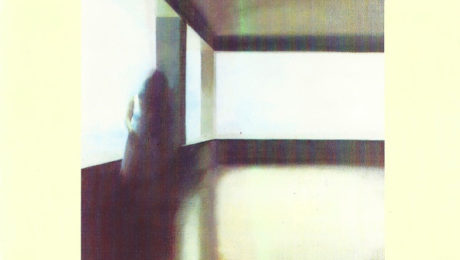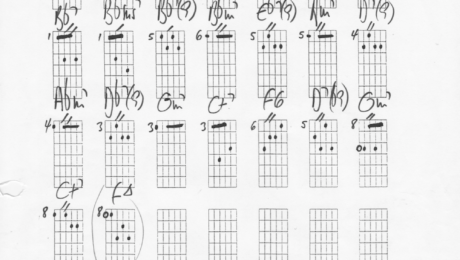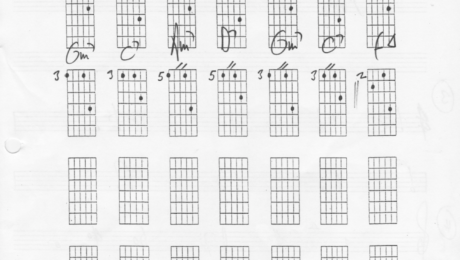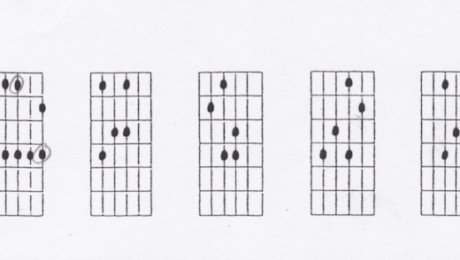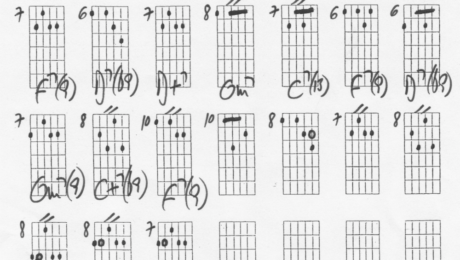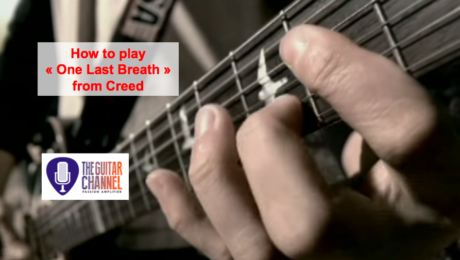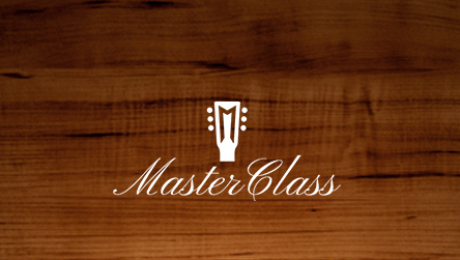Justin Bieber: the fabulous guitar part by Tom Strahle on his hit song ETA
I'm not sure I'd ever have thought of writing an article about a guitar part in a Justin Bieber song. And yet, after taking the elegantly clickbait of a video by Paul Davids (YouTube channel) about a hit played on a $99 guitar, that's what happened. So, ever since I discovered Justin Bieber's song ETA,
Paul Gilbert masterclass – How to play around the neck – Guitar Summit 2019
Paul Gilbert was one of the headliners of Guitar Summit 2019, he gave a great concert and hosted two masterclasses like the one you can see below. You can see him expose a simple and great idea to move a shape around the neck of the guitar. The principle Take a pattern of 2 or
- Published in Improve your playing
On June 23rd 2018, The Guitar Channel / La Chaîne Guitare organized in Paris a masterclass about Joe Satriani music and guitar playing with on of the great Satch specialist in France, the one and only Pascal Vigné (www.pascalv.com) who was accompanied by Saturax (www.saturax.fr) another young musician into Joe's playing. Several songs were played, here are
- Published in Improve your playing
Master the 5 positions of the pentatonic scale in a 5 fret zone
In this lesson the exercise (or the torture, especially at the beginning) that Simon Ghnassia proposes to do has the goal to help you assimilate thoroughly the 5 positions of the pentatonic scales. The goal is to play all the pentatonic scale positions (in minor in this case) by changing position at each chord with
- Published in Improve your playing
Down to the Waterline – Dire Straits – Chord chart for the solo
Huge Dire Straits fan and admirer of his guitarist singer Mark Knopfler, the first albums of the band particularly marked me, especially the first and Communiqué, the second. Sultans of Swing is probably one of the songs I've worked on most (and it's still the case today!) But also Down to the Waterline whose solo
- Published in Improve your playing
Tomo Fujita is an active musician on Instagram. I highly recommend to follow him on his account @tomojustfunky because he often posts very cool clips with a high pedagogical value. Here's an example below where he talks about the Mixolydian mode with an example easy to implement.
It's a 2 chord vamp: F/G (F chord with G on bass) and Ab/Bb (Ab chord with a Bb on bass)
To play Mixolydian on the first chord, you play the C major scale. On the second, you play Eb major scale.
- Published in Improve your playing
We are continuing our series on “Blues For Alice” with a little improvisation exercise. Yes, we are finally going to improvise freely! However, the one and only restriction is that we are going to use quarter notes only... The challenge is to generate a flowing, uninterrupted, sequence of quarter notes-- while still outlining the changes.
Now, before you start wondering why anyone would want to do that, let me explain that it is just an exercise.
- Published in Improve your playing
“Blues for Alice” by Bruno Pelletier-Bacquaert : 4-note groupings
We are continuing our series on “Blues For Alice” with the 4-note groupings. What we call 4-note groupings are simple patterns that are used to outline a chord progression.
- Published in All, Improve your playing
Comping means “to accompany”.
- Published in All, Improve your playing
We are continuing our study of “Blues For Alice” with 2 simple comping studies.
- Published in Improve your playing
“Blues For Alice” is a great Charlie Parker tune. It is a 12-bar Blues, but it moves through a lot of ii-V sequences. That modified version of the Blues is usually referred to as “Bird Blues” changes.
Blues for Alice (Part 1/6)
The lead sheet shows the fingerings I use. Keep in mind that those are only suggestions.
- Published in All, Improve your playing
All 7 Diatonic Arpeggios in Major Key by Bruno Pelletier-Bacquaert
This exercise will have us play through all of the arpeggios of a same tonality.
- Published in All, Improve your playing
Playing in and out of position (part 2/2) by Bruno Pelletier-Bacquaert
Here's the second part on the Playing In and Out of Position theme (part 1 is here).
- Published in Improve your playing
Playing in and out of position (part 1/2) by Bruno Pelletier-Bacquaert
Here's the first video of a two part series on the Playing In and Out of Position theme. When we first learn our Major scales, we are generally told to practice them in position. We visualize certain shapes all over the fingerboard and that helps us play more efficiently, more smoothly.
- Published in Improve your playing
Comping Study for Jazz Blues in F by Bruno Pelletier-Bacquaert
Comping means “to accompany”. In our case, it implies that those chords can be used when accompanying a soloist who is improvising over a Jazz Blues chord progression.
Comping Study for Jazz Blues in F
Each diagram represents a full measure, except when slashes are written above the chord—in which case those slashes represent the number of beats for that particular chord. The circled dots are optional replacement bass notes.
All of the chords have the root in the bass, except for the diminished 7th chord used as a substitution for the D7 chord.
- Published in All, Improve your playing
The admission of failure
It had been years since I played badly intro of this fabulous piece from Creed.
- Published in Improve your playing, News
Guitar Masterclass: learn popular songs on the guitar with your iPhone/iPad
We lost count of the smartphone/tablet applications that promise to teach you guitar. Unfortunately for many of them , the promise is far from being held. With Guitar Masterclass , it is a more pragmatic approach: learn to play the guitar popular songs.
The application does not promise you you will play like a god in 10 lessons or improvise like an old jazzman in 2 days , no. It shows you how to play in video a popular song on the guitar from beginning to end .
- Published in Improve your playing, Interviews, News
David Wallimann interview: finally discover the modes in a clear book
I found David Wallimann through his awesome YouTube channel so when I heard about his excellent book Guitar Methods Made Easy I contacted him to organize an interview. You will discover in this interview how he wrote his book, how he developed his approach of modes and many other things.
At one point or another in their learning life all the guitar players are exposed to modes without always understanding everything and above all without actually integrating all the wealth that they have in their playing, at least that was my case.
Podcast: Play in new window | Download | Embed
- Published in Interviews, News




